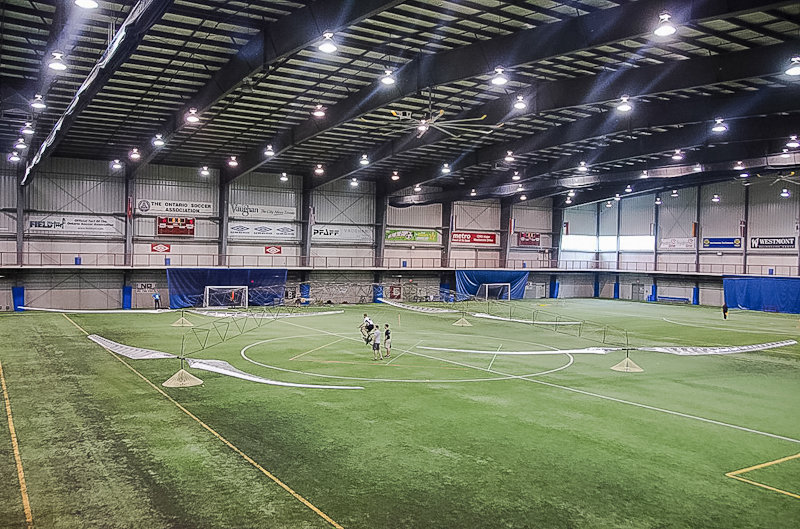
A team of University of Toronto alumni won a 33-year-old competition for creating the first human-powered helicopter July 2013.
The students are part of AeroVelo, a group led by engineers Todd Reichert and Cameron Robertson.
Their giant three-rotor helicopter, Atlas, hovered at an altitude of three metres for 65 seconds, using nothing but the energy supplied by pilot and engineer Reichert as he pedaled on a Cervelo bike frame, according to the group’s website.
The flight won the Igor Sikorsky Human-Powered Helicopter Competition, a prize offered by the American Helicopter Society (AHS), stated a press release from AHS.
The competition was to build a human-powered helicopter that could hover at an altitude of three metres for a minimum of 60 seconds within a 10-by-10-metre area, demonstrate the aircraft’s ability to generate a sufficient lift and to remain under the pilot’s control, as well as test the pilot’s endurance.
The Sikorsky Prize was established in 1980 in honour of Igor Sikorsky, one of the founding members of the AHS, and the founder of the Sikorsky Aircraft Corporation.
While it originally offered a prize of $10,000, in 2009 the Sikorsky Aircraft Corporation contributed $250,000 to the prize, as an incentive, said the AHS website.
The website also mentions that previous attempts to win the competition have been made by teams from California Polytechnic State University, University of Maryland, and the University of British Columbia.
According to AeroVelo’s representative, Meg Campbell, the group has been developing Atlas since January 2012, and began building in May that year.
“We decided to undertake this project as another great means of showing the world how innovative engineering, inspired thinking, and creative design can defy the impossible,” Campbell said.
According to the AHS’ press release, that is indeed what the competition was about—doing the impossible, rather than searching for any practical application.
The competition “was intended to challenge engineers in the vertical flight community to harness a variety of technical skills and work as a team to meet stringent technical requirements,” stated the release.
“It is like climbing Mount Everest. It is to prove it can be done. The scientific breakthroughs, engineering innovations, and inspiring accomplishments that have been engendered by the AHS Sikorsky Prize are a testament to ability of the human spirit to tackle seemingly impossible challenges.”
In addition to the engineering accomplishments of AeroVelo, AHS gives some credit for the success to the scientific breakthroughs that have occurred in the 33 years since the prize was established.
Aerospace engineering has seen “revolutionary improvements in composite structures and computer simulation, as well as understanding low-speed rotor aerodynamics and human power output,” stated the release.
A press release from AV states that the machine is made from over 1500 feet of carbon fibre tubes, and 10 kilometres of Kevlar thread among other materials, and is lighter than the air in the truck in which it is stored.
These factors combined with AeroVelo’s innovative design, allowed Atlas to meet the contest’s requirements, said the release.
“Atlas is about 30 per cent heavier and can carry a 30 per cent heavier pilot also,” Campbell said. With only a bicycle seat and wheels, the pilot pedals upright, and the machine has a more flexible structure.
Although AHS was not looking toward practical application of the human-powered helicopter, Campbell said winning the competition gives AV “a platform to change society’s perception of what is possible and to guide future solutions to pressing issues in transportation.”
“In the world of engineering, winning this prize shows what can be possible when you do more with less.”





